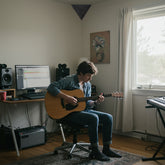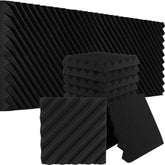Folk and Acoustic: Highlighting Intimacy and Detail
Folk and Acoustic: Highlighting Intimacy and Detail

Folk and acoustic music are deeply personal and emotionally rich genres that thrive on raw authenticity and organic warmth. Unlike electronic or heavily processed genres, folk and acoustic mixes require a delicate balance of subtlety and presence, preserving the intimacy of the performance. In this guide, we’ll explore the best practices for mixing folk and acoustic music, focusing on capturing detail, warmth, and a natural feel.
Key Characteristics of Folk and Acoustic Mixes
To create an intimate and immersive folk or acoustic mix, focus on:
- Natural Sound: Instruments and vocals should feel unprocessed and retain their organic character.
- Warm Tonal Balance: Midrange warmth and soft highs contribute to a soothing, inviting sound.
- Dynamic Sensitivity: Subtle volume changes and expressive playing should be preserved rather than over-compressed.
Recording Considerations for an Authentic Sound
Great folk and acoustic mixes start with excellent recordings. Here are some key recording techniques:
- Mic Placement: For acoustic guitars, use a small-diaphragm condenser mic positioned near the 12th fret for clarity and warmth.
- Room Acoustics: Record in a space with natural reverb and warmth, avoiding overly treated or dead-sounding rooms.
- Minimal Processing: Capture performances with as little processing as possible to maintain the authenticity of the sound.
Mixing Vocals for Intimacy
Vocals in folk and acoustic music should feel close, personal, and expressive. Here’s how to mix them effectively:
- EQ for Clarity: Roll off low-end rumble below 80 Hz and boost around 2–5 kHz for presence.
- Light Compression: Use a low-ratio (2:1) compressor with a slow attack and release to maintain dynamics while subtly controlling peaks.
- Natural Reverb: Choose a small room or plate reverb to create space without making the vocal sound distant.
Balancing Acoustic Instruments
Acoustic guitars, pianos, violins, and other organic instruments must be balanced carefully to avoid cluttering the mix.
- Acoustic Guitar: Use a gentle high-pass filter to remove unnecessary low-end while enhancing the natural resonance around 200–500 Hz.
- Strings and Woodwinds: Keep them soft and blended, using automation to bring out key moments.
- Piano: Allow its natural dynamics to shine by avoiding excessive compression.

Creating Depth Without Overprocessing
Folk and acoustic mixes benefit from depth and dimension while maintaining clarity. Here’s how to achieve this:
- Subtle Panning: Pan guitars slightly left and right to create a stereo field while keeping vocals centered.
- Reverb and Delay: Use minimal reverb and short delays to add depth without overpowering the natural performance.
- Volume Automation: Manually adjust volume levels to maintain the dynamics of soft fingerpicking or delicate vocal nuances.
Using Reference Tracks
When mixing folk and acoustic music, reference professional recordings to compare tonal balance, dynamics, and depth. This helps ensure your mix retains an organic and immersive feel.
Common Mistakes in Folk and Acoustic Mixing
Avoid these common mistakes when mixing folk and acoustic tracks:
- Over-Compression: Too much compression removes the expressive dynamics that make acoustic music special.
- Excessive Reverb: While reverb adds depth, too much can make a mix sound artificial and distant.
- Cluttered Midrange: Folk mixes often have multiple midrange-heavy instruments. Use EQ to prevent them from masking each other.
Conclusion
Mixing folk and acoustic music requires a careful balance of warmth, intimacy, and detail. By preserving dynamics, using light processing, and maintaining an organic tonal balance, you can create mixes that feel real and emotionally engaging. In the next post, we’ll dive into mixing strategies for reggae and world music, where groove and rhythm take center stage.
ABOUT AUTHOR
House Live Engineer of Free Bird, a live house with the history of South Korea's indie music scene.
Single album/Regular album/Live recording, Mixing and Mastering experience of various rock and jazz musicians
















